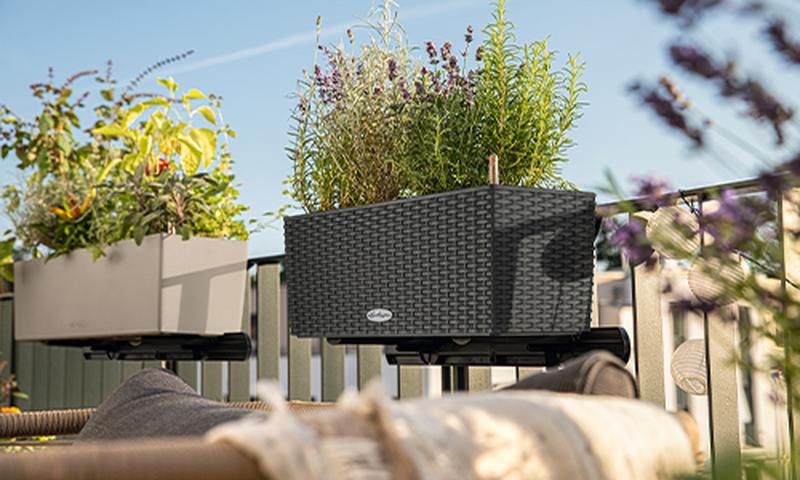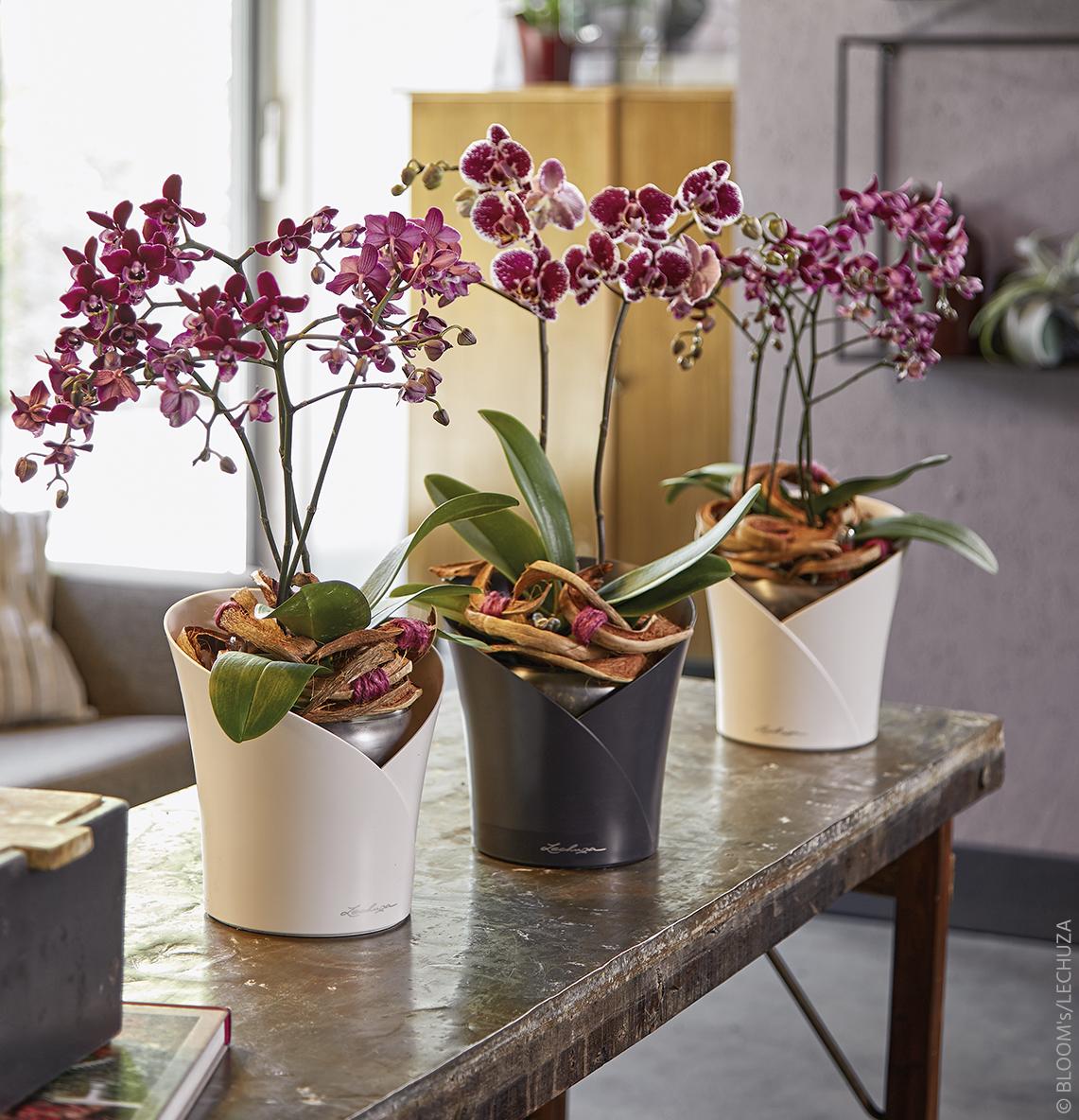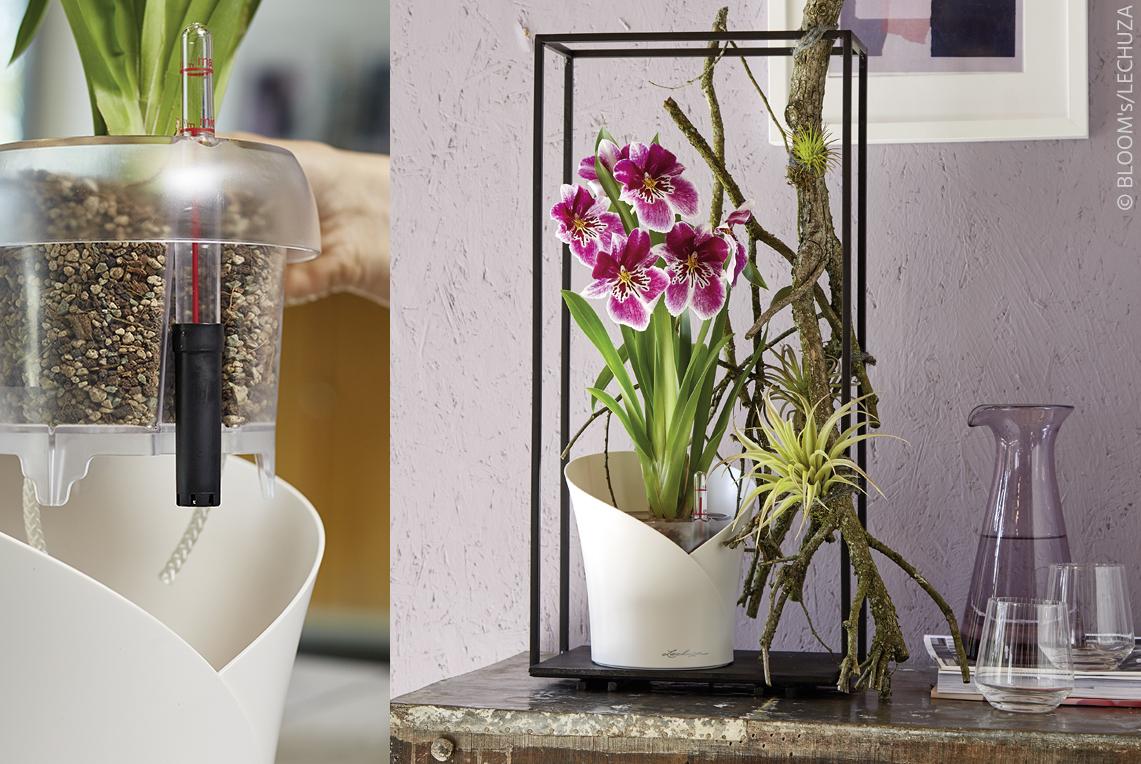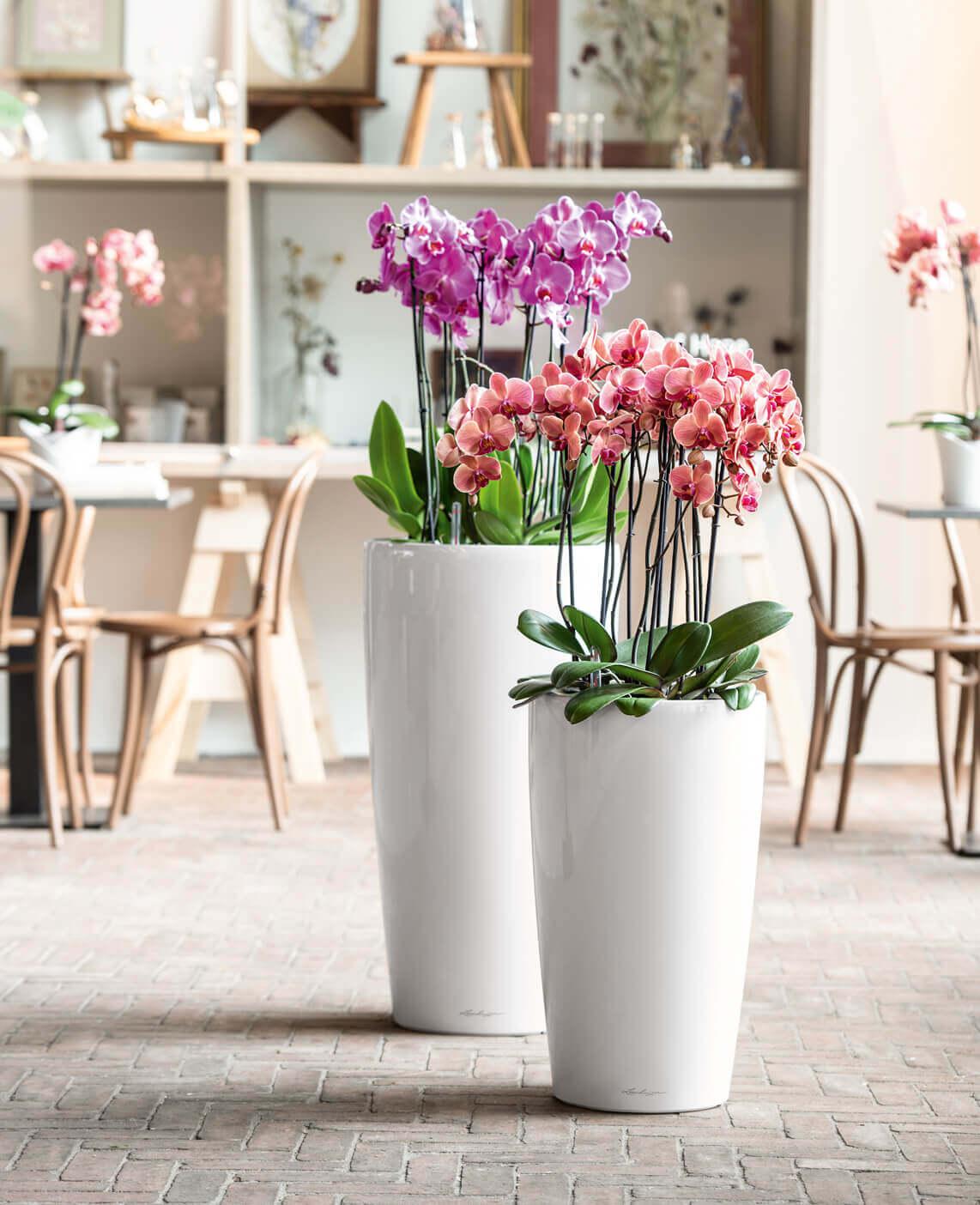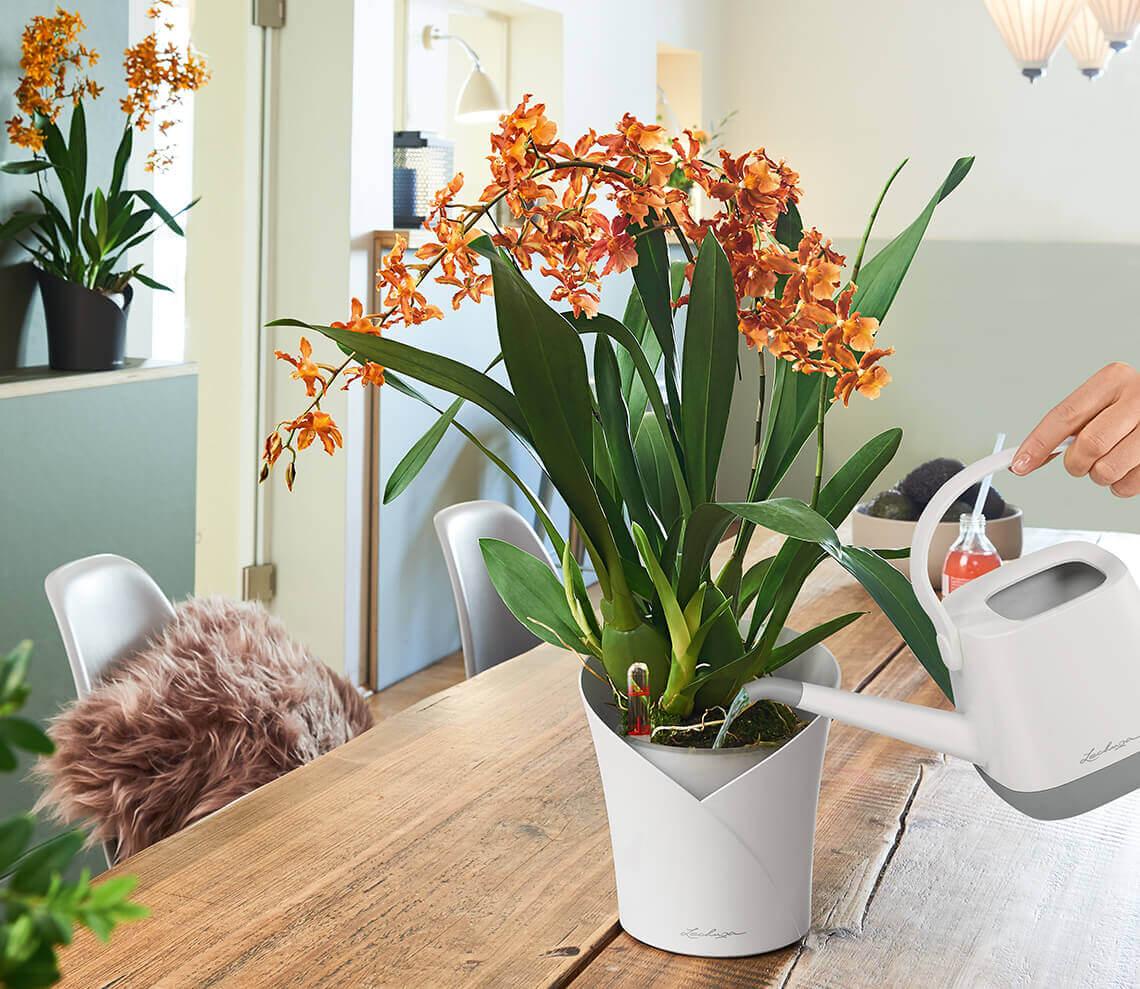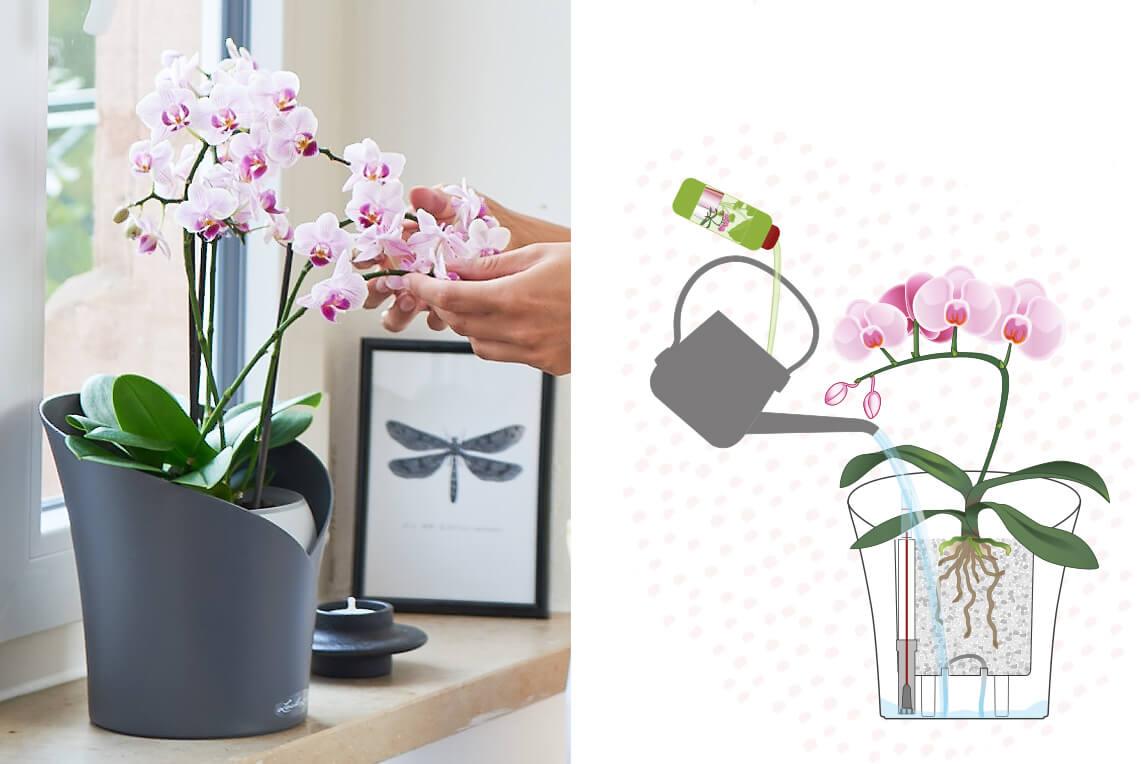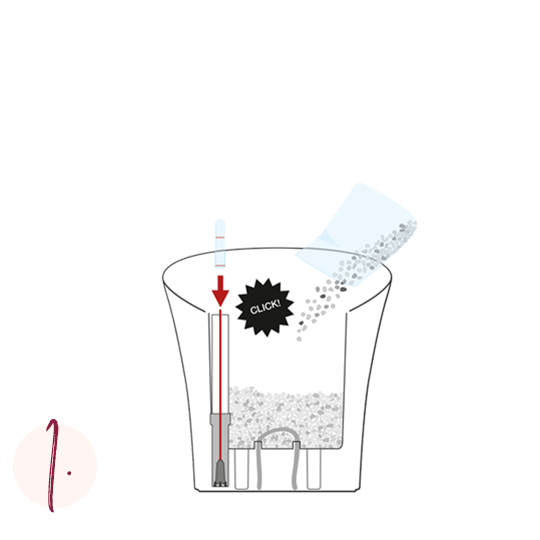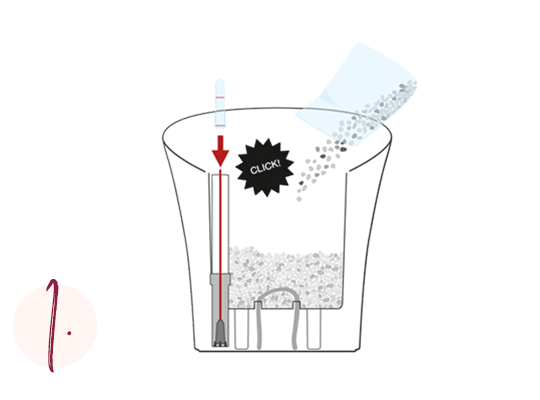Cultivate your orchids properly!
Enjoy flowers for longer
Orchids are beautiful, available in many colours and are simply
perfect as windowsill decorations. LECHUZA helps you bring your
orchids to life! Here are the recommended care instructions, as well
as how to easily plant these blooming beauties in suitable orchid
pots.
Designed especially for these precious tropical species,
ORCHIDEA is the new planter from LECHUZA that’s perfect for
meeting the high demands of plants such as Phalaenopsis and
Dendrobium.
The all-in-one pot for orchids
ORCHIDEA
Good style can be demanding – and orchids are very demanding! It’s never been so easy to meet the needs of these elegant plants though: this complete set comes with a stylish planter, translucent insert and special orchid substrate mix - only the best for these demanding beauties!
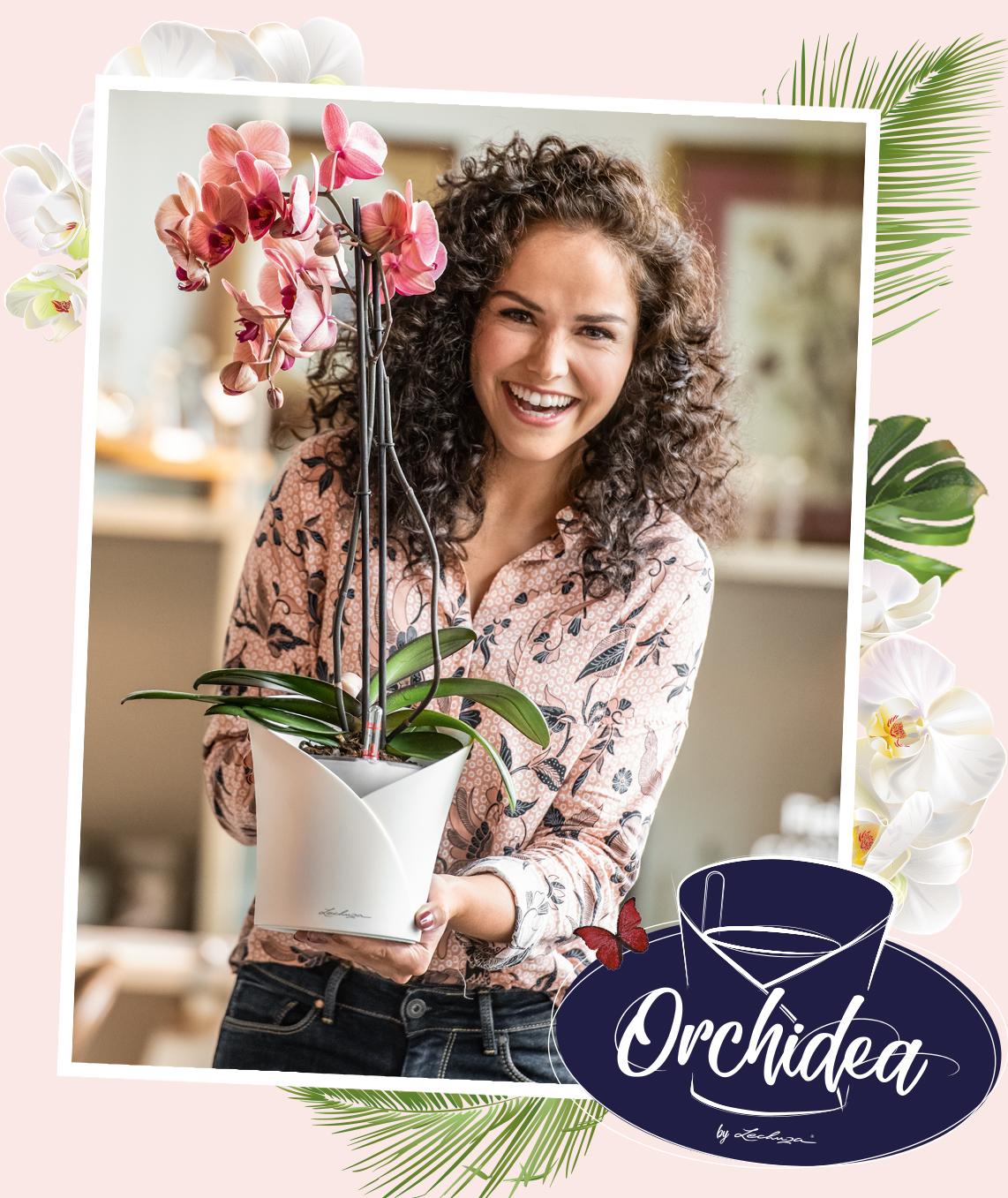
Fit for the challenge
and tailored to your orchid
Your orchids are going to love it: ORCHIDEA’s semi-transparent liner allows plenty of light reach the roots, promoting healthy growth for this demanding plant.
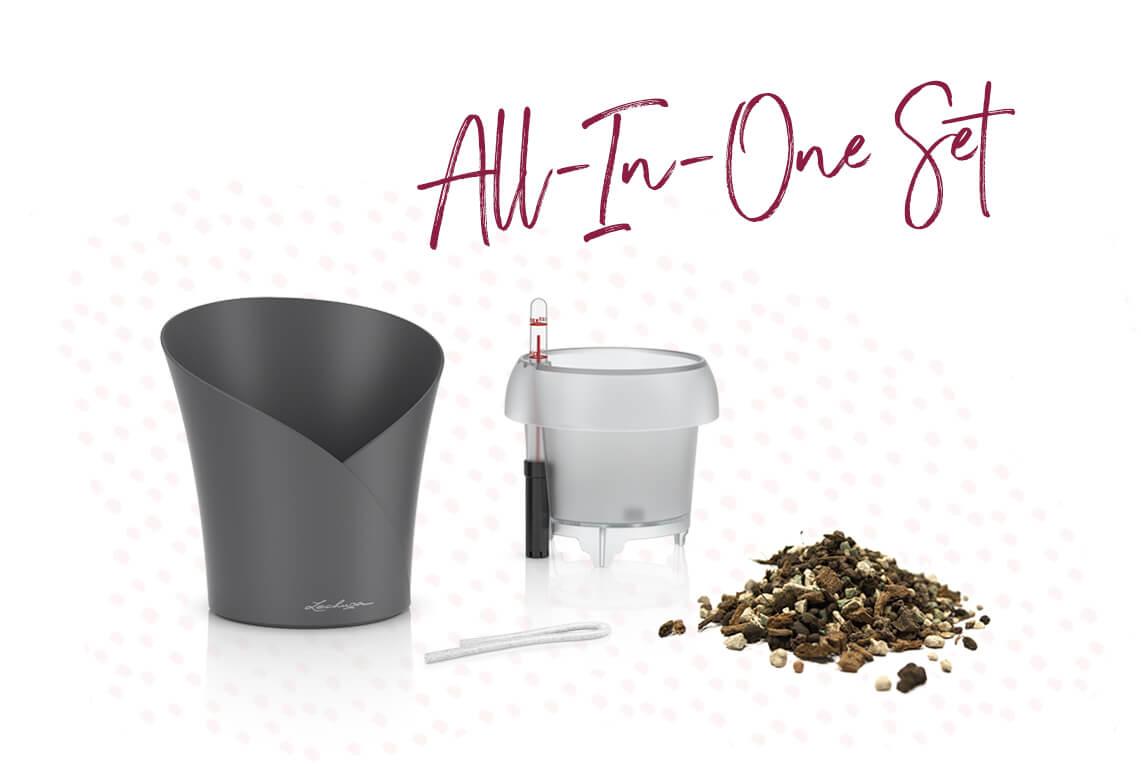
The original LECHUZA orchid substrate mix comprises coconut fibres and
humin, and it is exactly what orchids need for perfect growth.
And
the best bit is that the orchid planter set already includes enough of
this special substrate mix for potting!
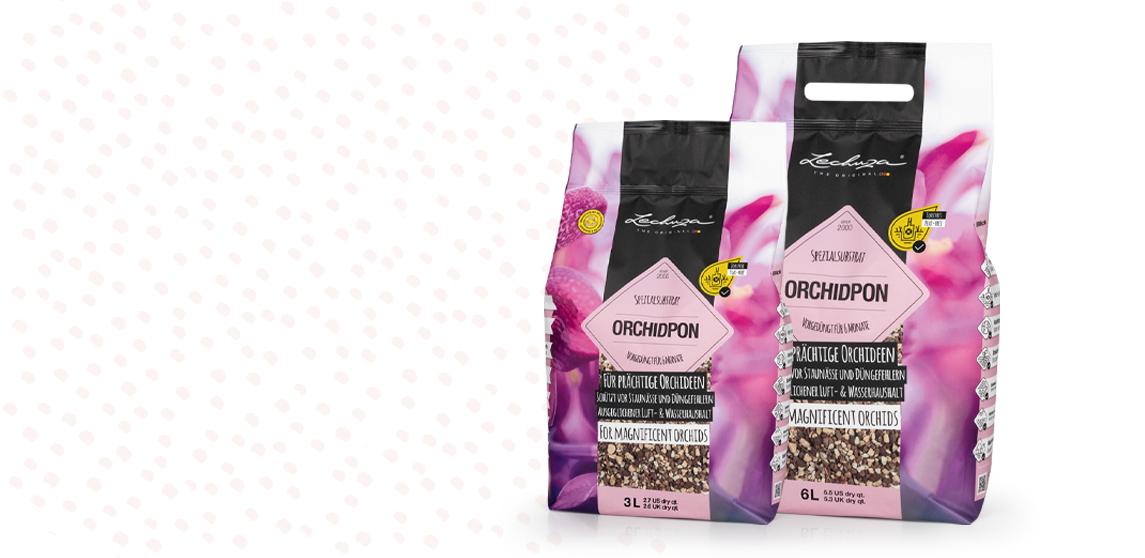
ORCHIDPON
Special substrate for orchids
Especially for the noble tropical inhabitants LECHUZA has designed the
substrate
ORCHIDPON, which offers the plants ideal conditions for an opulent flowering
splendor. ORCHIDPON enables a balanced water and air supply, good
nutrient storage and a constant pH value. This makes orchids feel good
and provides them with the best all-round care.
The orchid substrate can be used not only for ORCHIDEA, but also for
all other LECHUZA and conventional planters due to its good
properties.
Caring for orchids: professional advice
Tips from LECHUZA’s experts
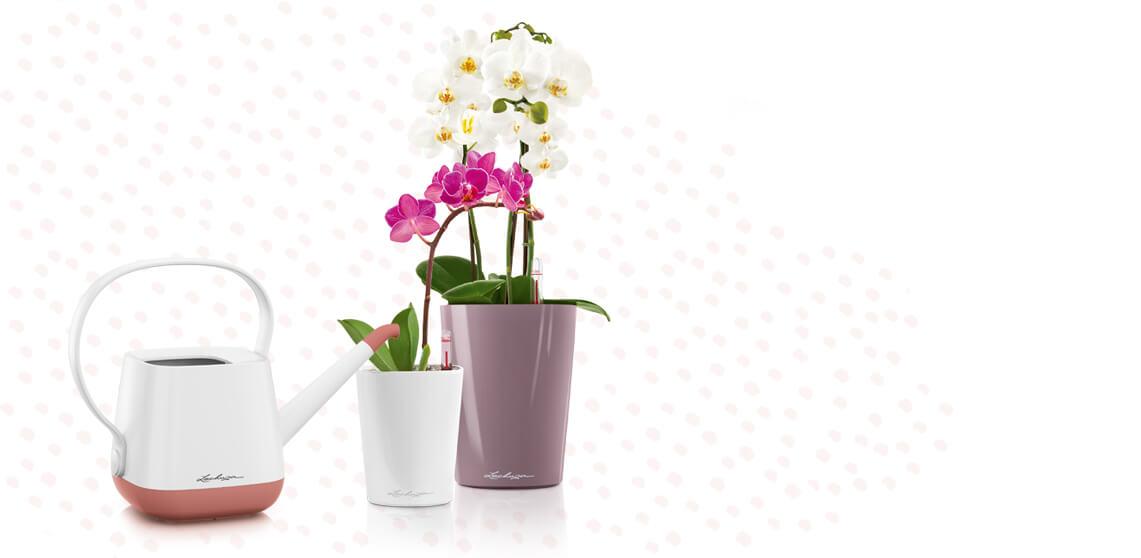
Correct watering
Things to watch out for
Orchids are particularly prone to root rot: Originating in
rainforests, most orchids enjoy high humidity in the air, but do not
tolerate being soggy and waterlogged! The LECHUZA irrigation system
supplies your plants with the optimum amount of water.
Important: Orchids prefer water which doesn’t contain calcium
carbonate (lime), e.g. rainwater. From time to time, you can also
spray the whole plant with water too, creating a pleasant steam around
the plant to imitate their natural habitat in the tropics.
Orchid watering instructions
Follow these steps:
- If there is no water supply shaft, only pour moderately over the substrate from above – do not pour water over the plant’s flowers or leaves. Half-fill the water reservoir, or use a little less water depending on the size and individual needs of your orchid.
- Once all the water has gone, allow the plant to be dry for a period of 7–14 days. Using your finger, check how moist the substrate mix is – and always take into account how much water your orchid variety needs. Note: wilted leaves may be a sign of over-watering. LECHUZA specialists are available to answer your individual queries over the phone. Give the customer service team a call!
Correct fertilising and feeding
Like any plant, orchids need nutrients to grow. However, since they don’t need a lot, you can quickly run the risk of over-fertilising them. LECHUZA’s slow-release fertiliser can be used both with the special orchid substrate mix and LECHUZA’s PON substrate for a period of 4–6 months. Following on from that, use a commercially available orchid fertiliser every 4–6 weeks.

Perfect positioning
Orchids need a lot of light, but should still be protected from strong, direct sunlight (for example, in east- or west-facing windows). Otherwise, they may experience burns from the sun. It is best to leave your orchid in a half-shaded position for a while, before then moving it to a sunnier spot – this should lower the risk of burns.
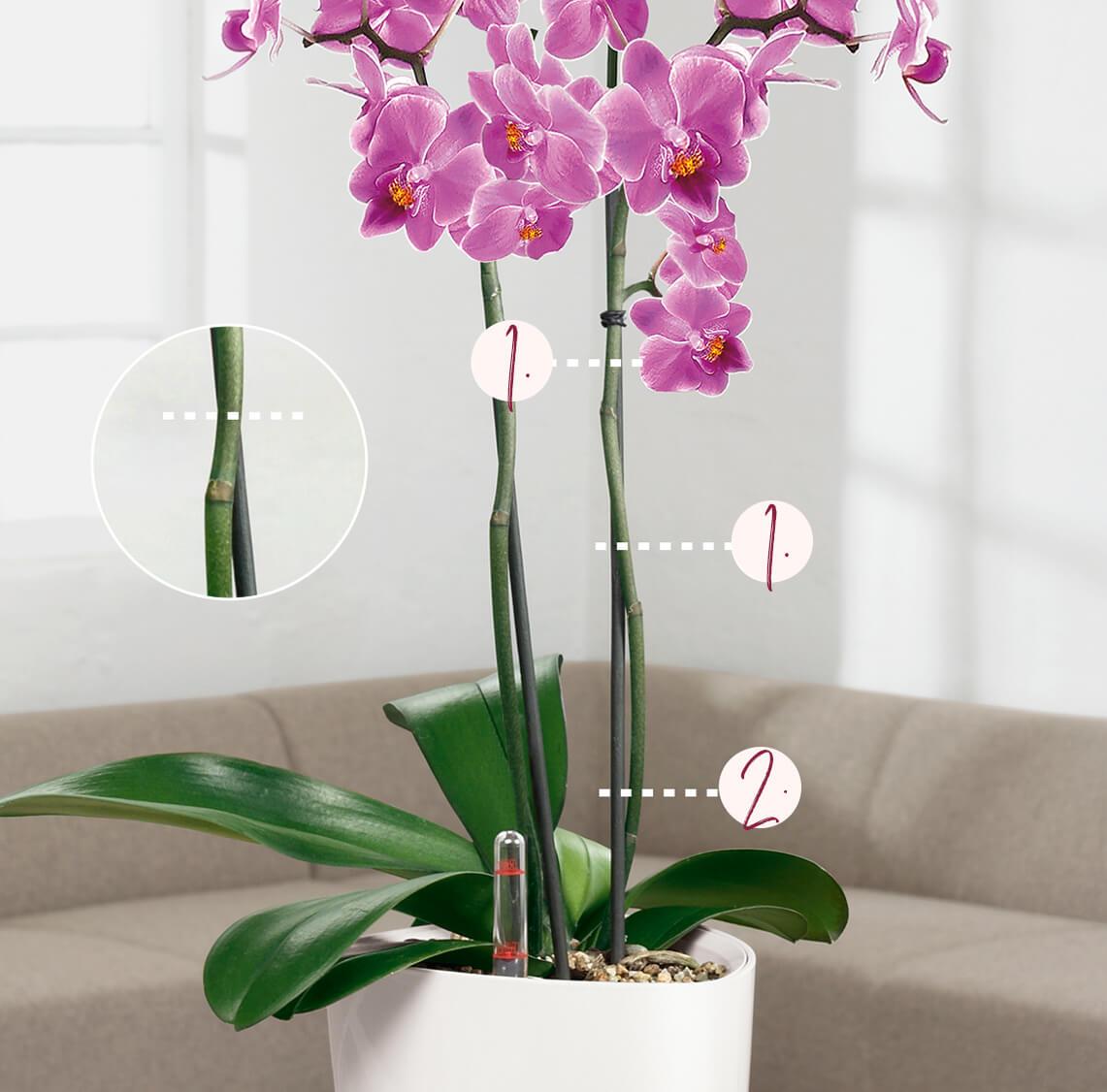
Withering and pruning
What to do in case of flower loss or damage
In principle, it is quite normal for orchids to lose their flowers from time to time. It doesn’t always mean that you haven’t looked after them properly. You should cut an orchid back if it loses all its flowers on one stem, if no new flowers regrow from it and if the stem is already yellow/brown. There are two options:
- The fast way to encourage a new shoot to start growing quickly, cut the stem about 1 cm above the second or third dormant bud.
- The gardener’s way: by cutting the stem about 1 cm above the first dormant bud, you will give the plant more time to recover. This will make the single dormant bud turn into a new flowering shoot. This method may take longer for the next flowers to appear (up to half a year), but the orchid will reward you with stronger flowers and richer displays of colour.
Repotting orchids
Step-by-step guide
LECHUZA’s table-top planters are the perfect size for young orchids. The substrate mix can be found in a bag in the planter insert. Fill up the insert, leaving enough room for the root ball to be placed inside.
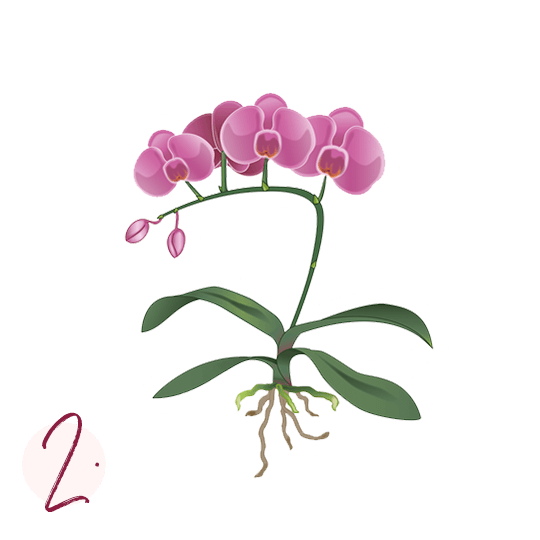
Gently remove wood and/or bark from the orchid’s roots. Take this opportunity to cut off old, rotting roots as well.

Position your plant with the root ball on top the substrate layer. Fill up the insert, right to the brim, using the remaining orchid substrate mix. If possible, put larger aerial roots into the planter.
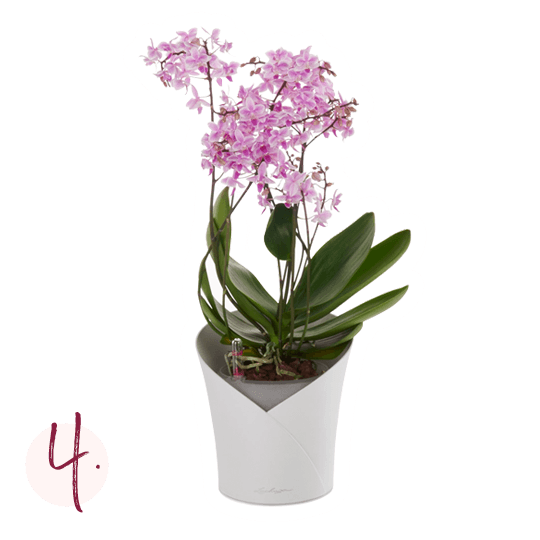
By gently tapping on the planter repeatedly, the substrate will shift around and achieve greater contact between the orchid roots and the substrate. Lightly press down with your fingers so that your orchid is firmly in place inside the planter. And then you’re all done!

